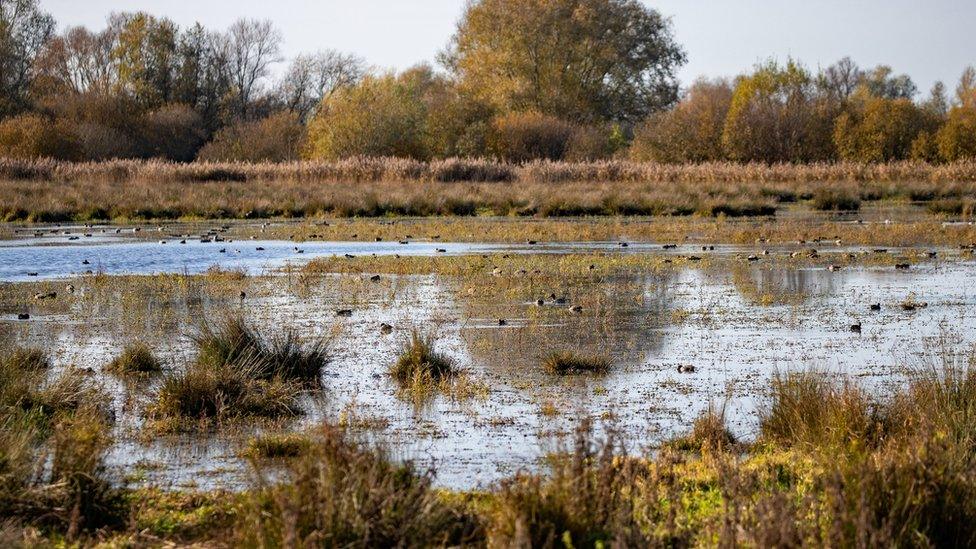First cranes appear on reserve's newest waterway
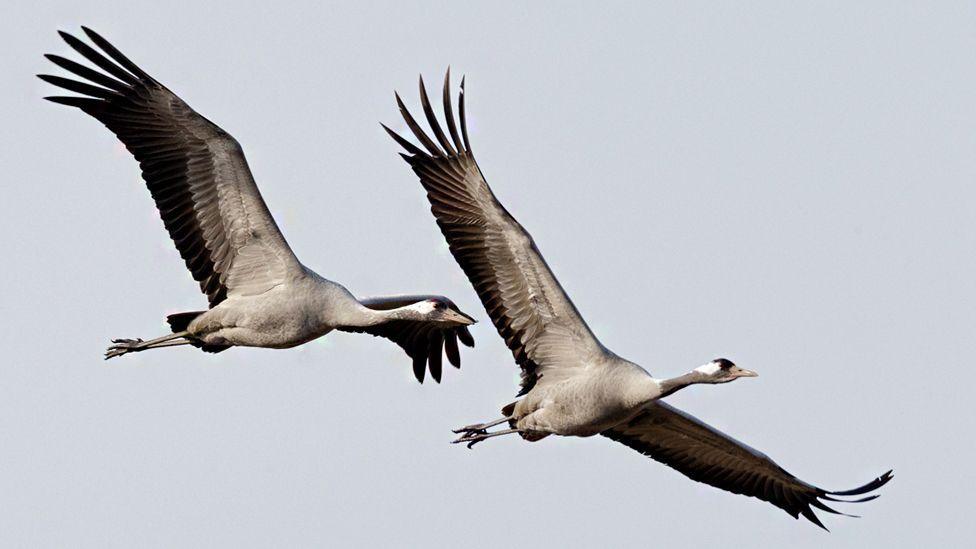
A £1.8m peat restoration project began in Wicken Fen in October and within a few months cranes had appeared at the new habitat
- Published
Cranes have appeared for the first time at a wetland nature reserve's newest habitat.
The National Trust began a £1.8m peat restoration project in the autumn at Wicken Fen, Cambridgeshire, to restore 531 acres (215 hectares) of peat.
Ajay Tegala, from its countryside team, said the arrival of the birds, which used to be extinct in the UK, shows how "really special" wetland habitats are.
"As we've created more waterways, we're getting greater number of species nesting here," he said.
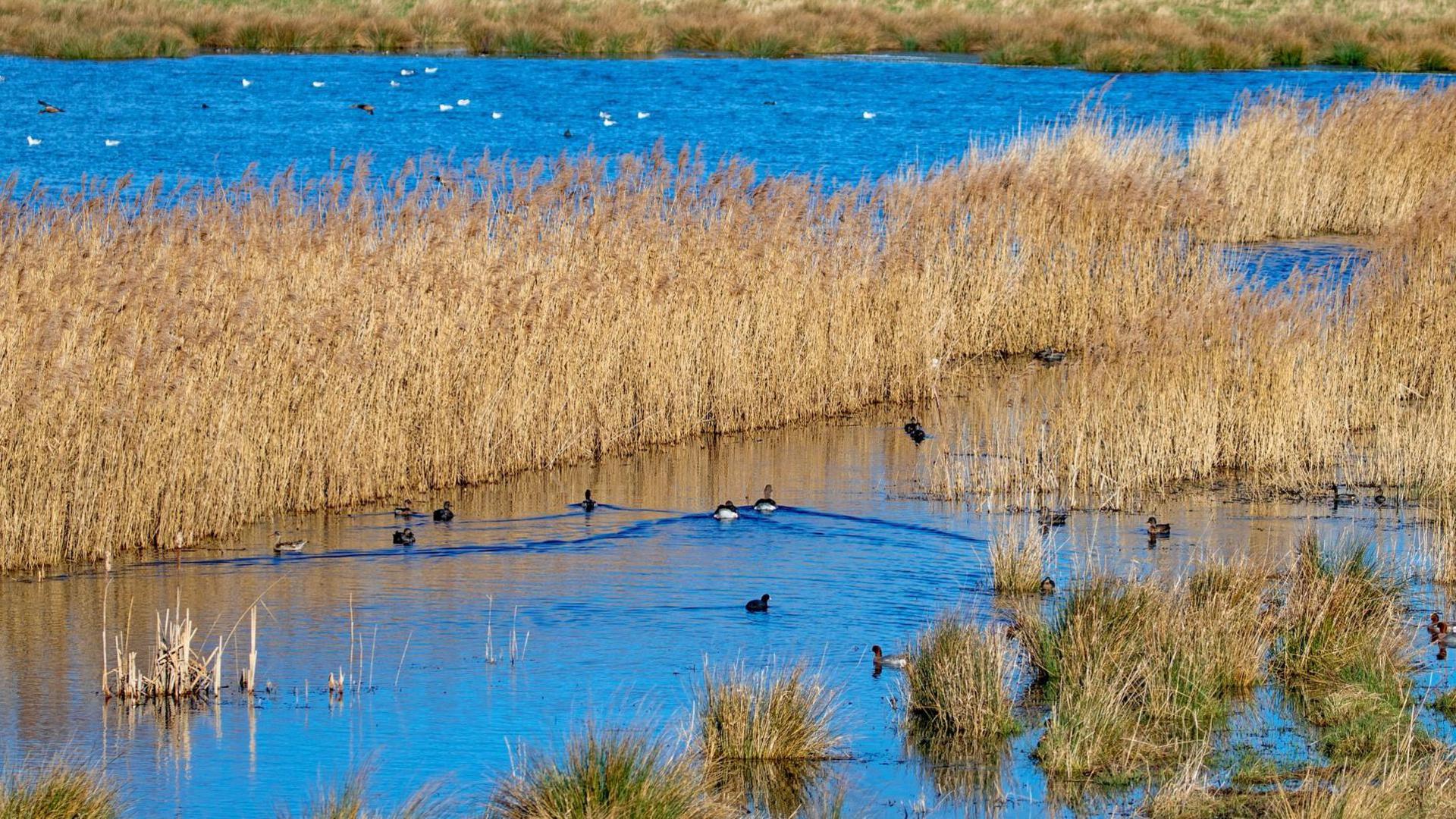
The East Anglian Fens once covered 3,800sq km (9,840sq miles) of deep peat - about 1% of the undrained fenland habitat is now left, said the National Trust
Cranes - which bred at the reserve for the first time in the summer - are among "indicator species" that show how nature can bounce back if the habitat is right, explained Mr Tegala.
The birds were hunted to extinction about 400 years ago, before returning to the UK in 1979 - a record 80 pairs were confirmed breeding in the UK in 2023, external.
They had not been seen in that part of the reserve until the peat reclamation work began in the autumn.
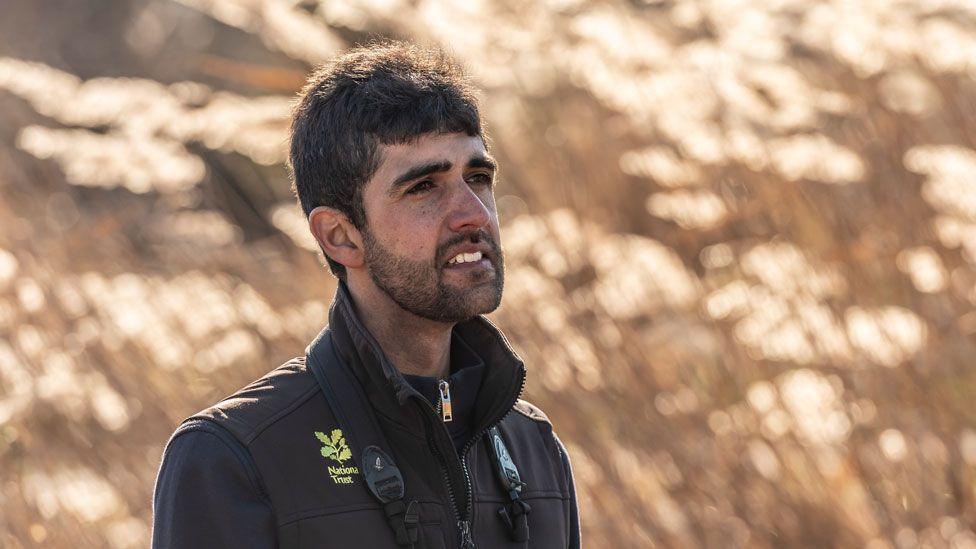
Ajay Tegala is one of 20 National Trust staff at Wicken Fen who are supported by about 100 volunteers
Wicken Fen is home to about 9,000 species, including rare butterflies, dragonflies, birds and plants.
Mr Tegala said: "Wetlands are really special for wildlife because so much life depends on them, whether it's the insects drawn to the water, all the birdlife drawn to the insects - and then nesting birds find safe places to nest in reeds or roost in trees around."
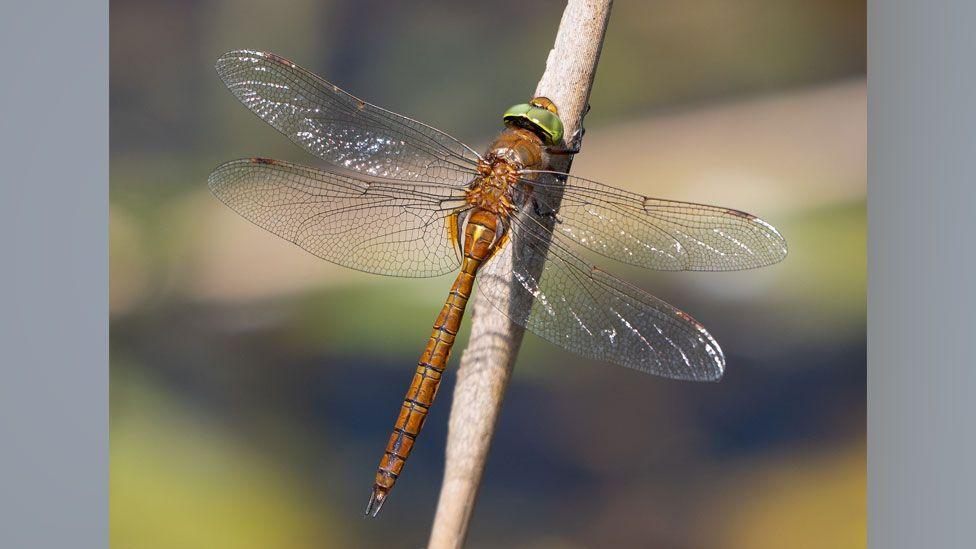
More than 22 of the UK's 57 dragonfly species have been recorded at Wicken, including the Norfolk Hawker
Other rare creatures which make Wicken Fen their home include marsh harriers, bitterns, otters and water voles.
The rare Norfolk hawker dragon fly has also been thriving, having begun breeding at the reserve about 10 years ago.
"The insect life attracts birds like hobbies, which migrate from Africa, and other African migrants like the increasingly rare swifts and cuckoos," said Mr Tegala.
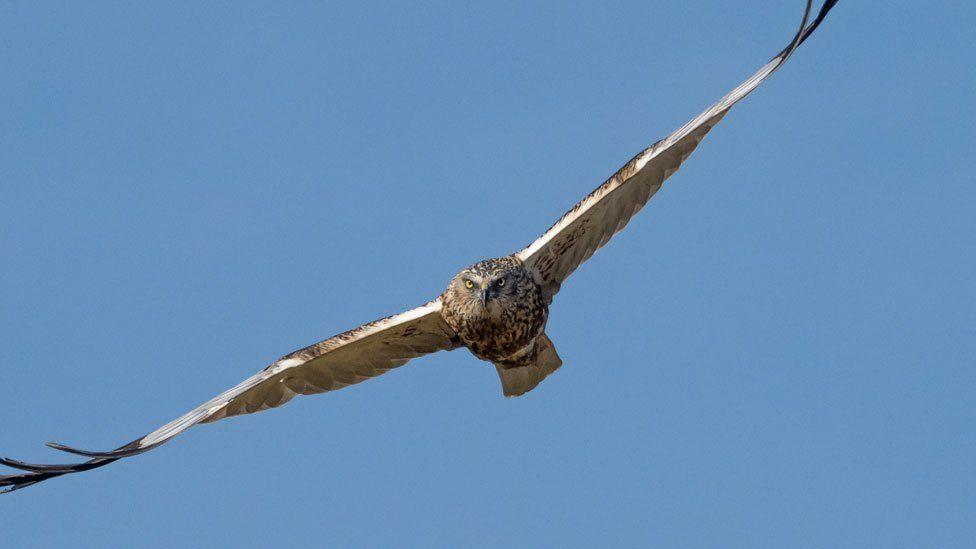
Five pairs of marsh harriers, which feed on frogs, small birds and mammals, now nest at Wicken Fen - they nearly went extinct in the 1970s
He was speaking on World Wetlands Day, which makes up 6% of the Earth's land surface, containing 40% all plant and animal species, according to the UN, external.
In Roman times about 25% of the British Isles is believed to have been covered by wetlands; today it is about 5% of the UK landscape, external.
Mr Tegala said: "Wetlands are fantastic places, they're important for our wellbeing, for our wildlife and for carbon capture.
"We need more of them and I'd encourage people to create their own - even if it's just a little pond in the back garden."
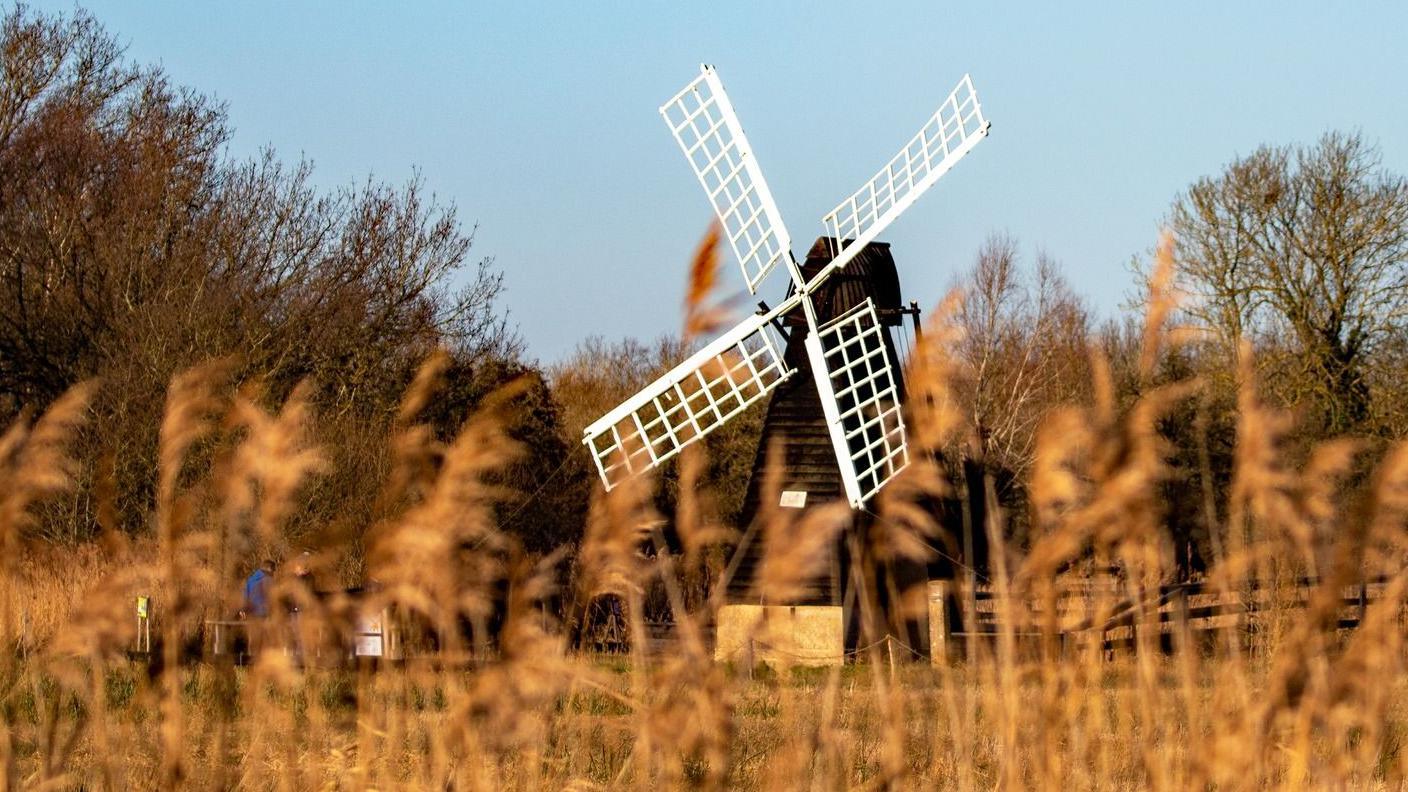
The charity acquired its first two acres (0.8 hectares) of land at Wicken Fen in 1899, external and now extends across more than 2,000 acres (830 hectares)
Get in touch
Do you have a story suggestion for Cambridgeshire?
Follow Cambridgeshire news on BBC Sounds, Facebook, external, Instagram, external and X, external.
Related topics
- Published1 May 2024
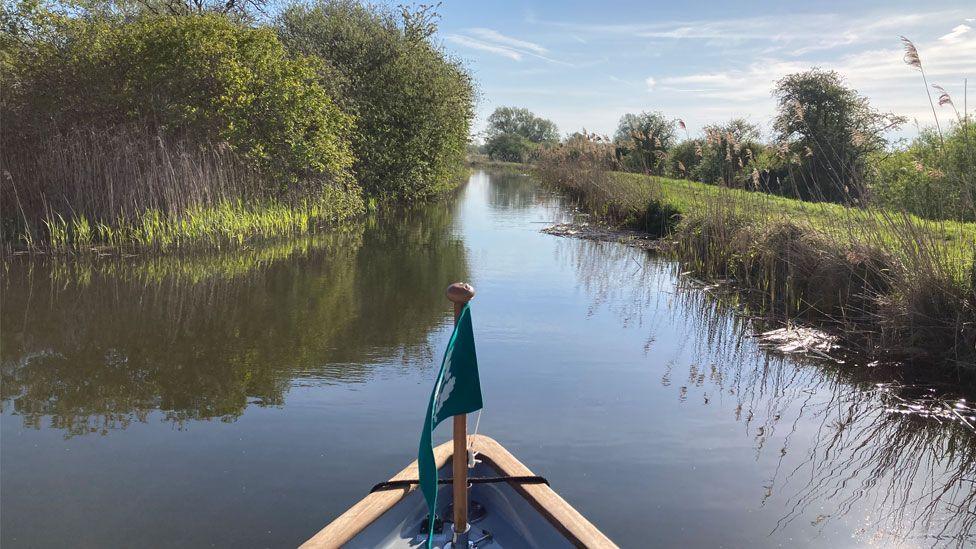
- Published5 September 2024
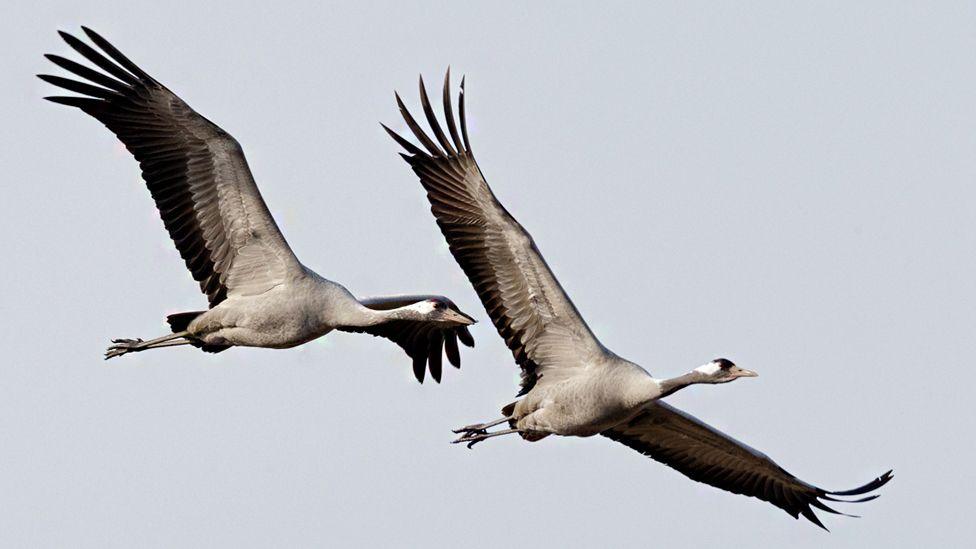
- Published30 June 2024
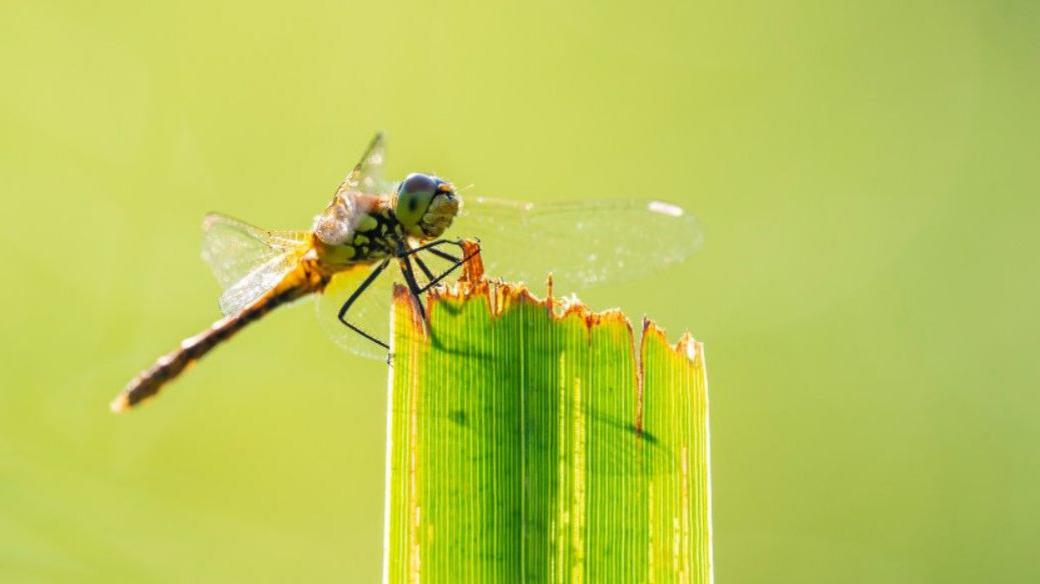
- Published21 January 2024
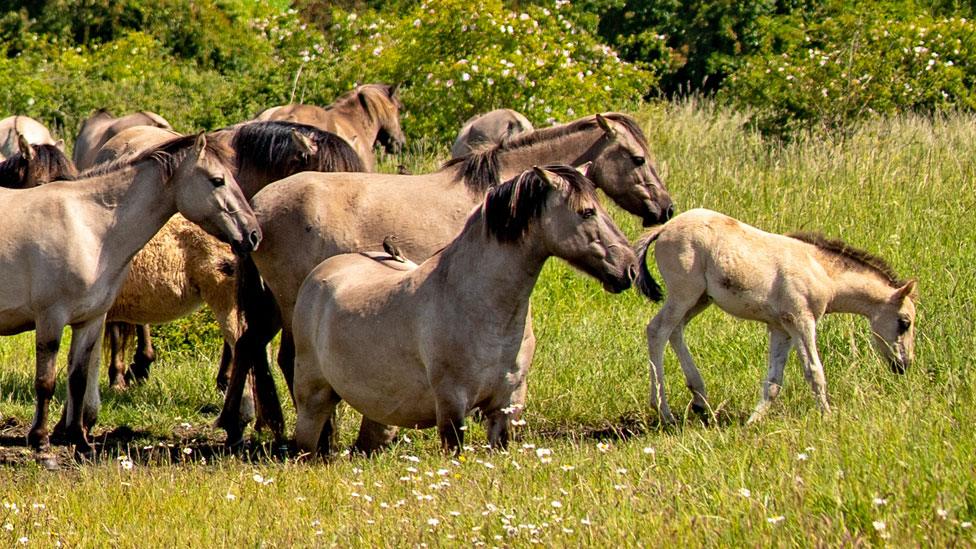
- Published24 November 2023
